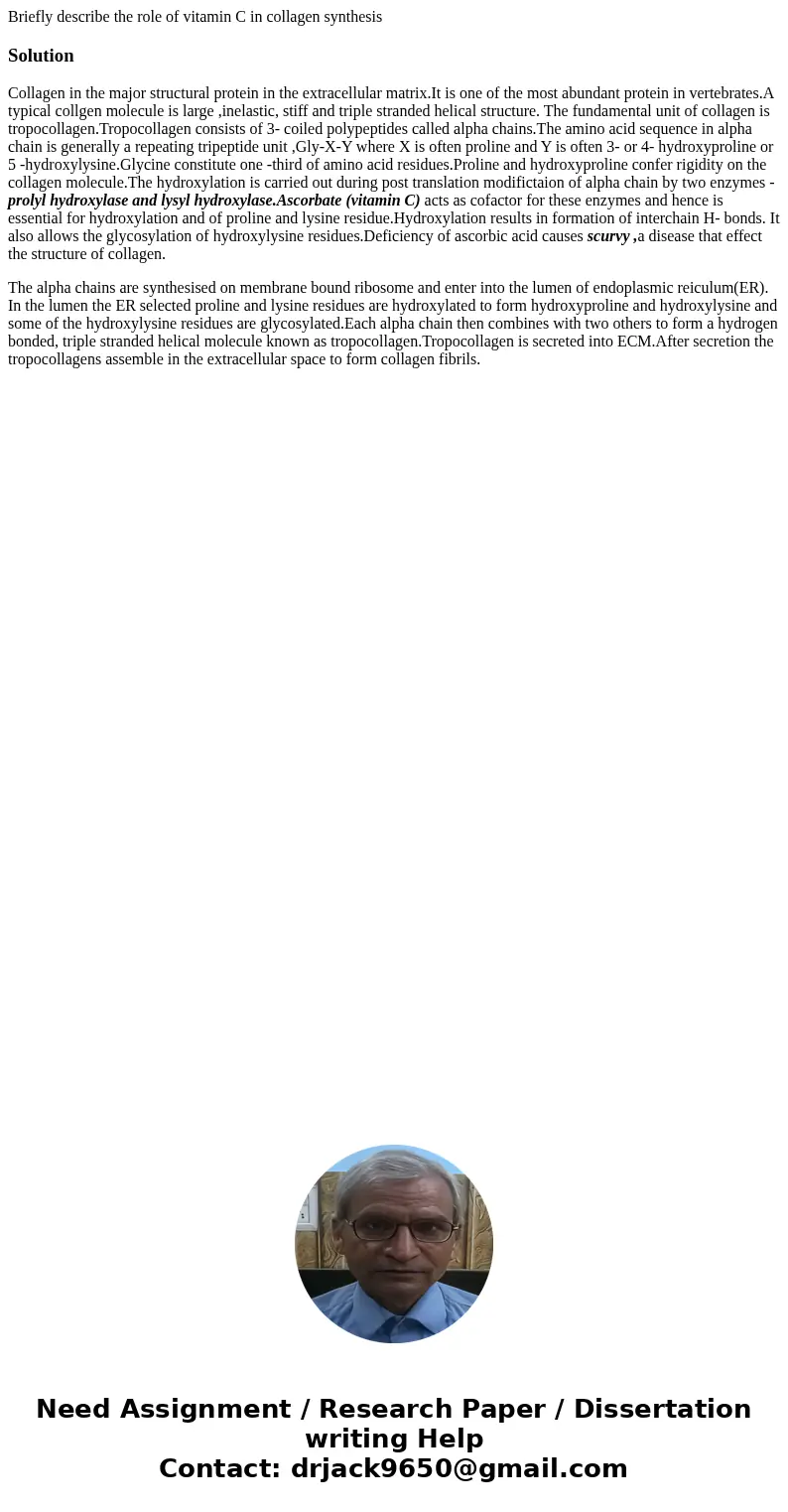Briefly describe the role of vitamin C in collagen synthesis
Solution
Collagen in the major structural protein in the extracellular matrix.It is one of the most abundant protein in vertebrates.A typical collgen molecule is large ,inelastic, stiff and triple stranded helical structure. The fundamental unit of collagen is tropocollagen.Tropocollagen consists of 3- coiled polypeptides called alpha chains.The amino acid sequence in alpha chain is generally a repeating tripeptide unit ,Gly-X-Y where X is often proline and Y is often 3- or 4- hydroxyproline or 5 -hydroxylysine.Glycine constitute one -third of amino acid residues.Proline and hydroxyproline confer rigidity on the collagen molecule.The hydroxylation is carried out during post translation modifictaion of alpha chain by two enzymes - prolyl hydroxylase and lysyl hydroxylase.Ascorbate (vitamin C) acts as cofactor for these enzymes and hence is essential for hydroxylation and of proline and lysine residue.Hydroxylation results in formation of interchain H- bonds. It also allows the glycosylation of hydroxylysine residues.Deficiency of ascorbic acid causes scurvy ,a disease that effect the structure of collagen.
The alpha chains are synthesised on membrane bound ribosome and enter into the lumen of endoplasmic reiculum(ER). In the lumen the ER selected proline and lysine residues are hydroxylated to form hydroxyproline and hydroxylysine and some of the hydroxylysine residues are glycosylated.Each alpha chain then combines with two others to form a hydrogen bonded, triple stranded helical molecule known as tropocollagen.Tropocollagen is secreted into ECM.After secretion the tropocollagens assemble in the extracellular space to form collagen fibrils.

 Homework Sourse
Homework Sourse